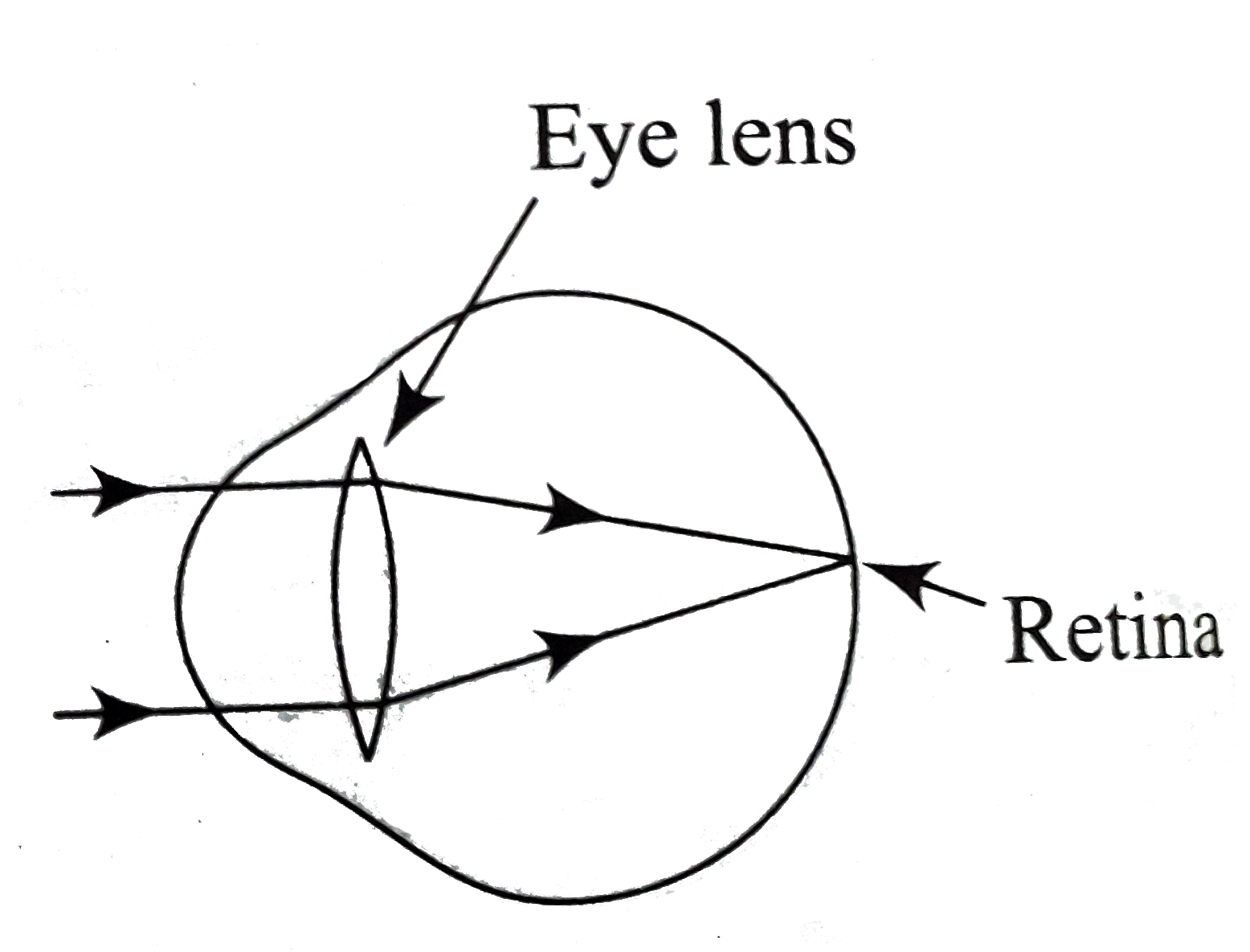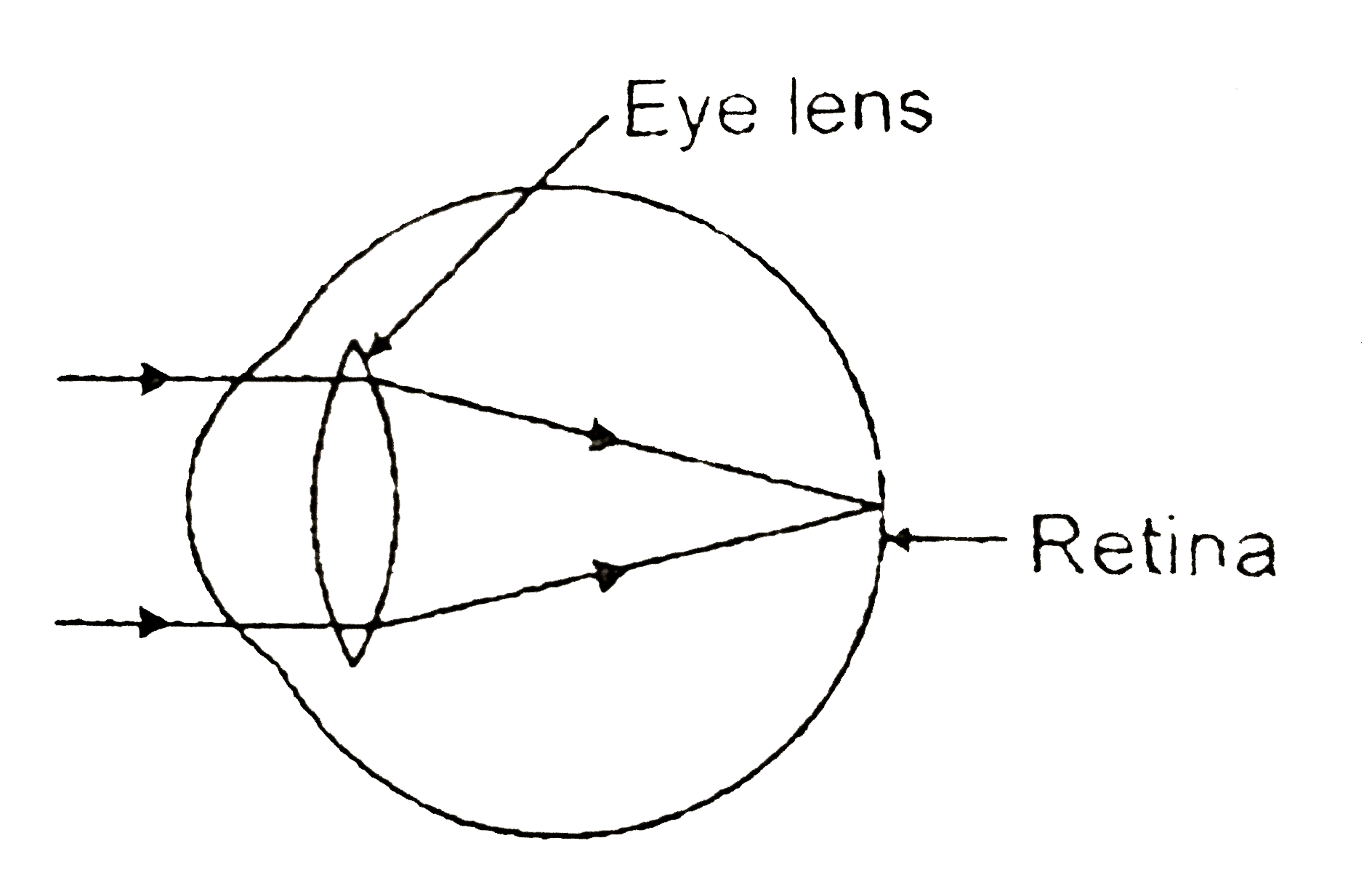By mistake, an eye surgeon puts a concave lens in place of the lens in the eye after a cataract operation. Will the patient be able to see clearly any object placed at any distance?
Step by step video & image solution for By mistake, an eye surgeon puts a concave lens in place of the lens in the eye after a cataract operation. Will the patient be able to see clearly any object placed at any distance? by Physics experts to help you in doubts & scoring excellent marks in Class 12 exams.
Updated on:21/07/2023Topper's Solved these Questions
- OPTICAL INSTRUMENTSBOOK - HC VERMACHAPTER - OPTICAL INSTRUMENTSEXERCISE - Objective 1
9 Videos
- OPTICAL INSTRUMENTSBOOK - HC VERMACHAPTER - OPTICAL INSTRUMENTSEXERCISE - Objective -1
2 Videos
- OPTICAL INSTRUMENTSBOOK - HC VERMACHAPTER - OPTICAL INSTRUMENTSEXERCISE - Worked Out Examples
10 Videos
- MAGNETIC PROPERTIES OF MATTERBOOK - HC VERMACHAPTER - MAGNETIC PROPERTIES OF MATTEREXERCISE - Exercises
9 Videos
- PERMANENT MAGNETSBOOK - HC VERMACHAPTER - PERMANENT MAGNETSEXERCISE - Exercises
25 Videos
Similar Questions
Knowledge Check
Eye lens is held in the place by
AMuscle fibres of irisBLigaments attached to the ciliary bodyCA transparent gel called vitreous humorDThin watery fluid called aqueous humorThe ciliary muscles of eye control the curvature of the lens in the eye and hence can alter the effective focal length of the system. When the muscles are fully relaxed, the focal length is maximum. When the muscles are strained, the curvature of lens increases. That means radius of curvature decreases and focal length decreases. For a clear vision, the image must be on the retina. The image distance is therefore fixed for clear vision and it equals the distance of retina from eye lens. It is about 2.5cm for a grown up person.
A perosn can theoretically have clear vision of an object situated at any large distance from the eye. The smallest distance at which a person can clearly see is related to minimum possible focal length. The ciliary muscles are most strained in this position. For an average grown up person, minimum distance of the object should be around 25cm.
A person suffering from eye defects uses spectacles (eye glass). The function of lens of spectacles is to form the image of the objects within the range in which the person can see clearly. The image o the spectacle lens becomes object for the eye lens and whose image is formed on the retina.
The number of spectacle lens used for th eremedy of eye defect is decided by the power fo the lens required and the number of spectacle lens is equal to the numerical value of the power of lens with sign. For example, if power of the lens required is +3D (converging lens of focal length 100/3cm ), then number of lens will be +3.
For all the calculations required, you can use the lens formula and lensmaker's formula. Assume that the eye lens is equiconvex lens. Neglect the distance between the eye lens and the spectacle lens.

Q. A near sighted man can clearly see ojects only upto a distance of 100cm and not beyond this. The number of the spectacle lenses necessary for the remedy of this defect will beA+1B1C+3D3The ciliary muscles of eye control the curvature of the lens in the eye and hence can alter the effective focal length of the system. When the muscles are fully relaxed, the focla length is maximum. When the muscles are strained the curvature of lens increases (that means radius of curvature decreases) and focla length decreases. For a clear vision of curvature decreases) and focal length decreases. For a clear vision the image must be on retina. from eye-lens. it is about 2.5cmfor a grown-up person
A person can theoretically have clear vision of situated at any large distance from the eye. The smallest distance at which a person can clearly see is related to minimum possible focal length. The ciliary muscles are most straineed in this position. For an average grown-up person minimum distance of object sould be around 25cm.
A person suffering for eye defects uses spectacles (eys glass). The function of lens of spectacles is to form the image of the object within the range in which person can see clearly. The image of the spectacle-lens becomes object for eye-lens and whose image is formed on retina.
The number of spectacle-lens used for the remedy of eye defect is decided by the power of hte lens required and the number of spectacle-lens is equal to the numerical value of the power of lens with sign. for example power of lens required is +3D (converging lens of focal length 1003cm) then number of lens will be +3.

For all the calculations required you can use the lens formula and lens maker's formula. Assume that the eye lens is equiconvex lens. Neglect the distance between eye lens and the spectacle lens. A nearsighted man can clearly see object only upto a distance of 100cm and not beyond this. The number of the spectacles lens necssary for the remedy of this defect will be.A+1B−1C+3D−3
Why is a normal eye not able to see clearly the objects placed closer than 25 cm?
View SolutionWhy is normal eye not able to see clearly the objects placed closer than 25 cm ?
View SolutionA person suffering from deferctive vision can see objects clearly only beyond 100 cm from the eye . Calculate the power of the lens required so that he can see clearly the object placed at least distance of distinct vision (D= 25 cm).
View SolutionThe ability of the lens in human eye to change the power of the lens to be able to see the near and far off distances is called the power of __________,
View SolutionA point object is placed on the optic axis of a convex lens of focal length f at a distance of 2f to the left of it. the diameter of the lens is 'd' . An eye is placed at a distance of 3f to the right of the lens and a distance h below the optic axis. The maximum value of h to see the image is
View Solution
